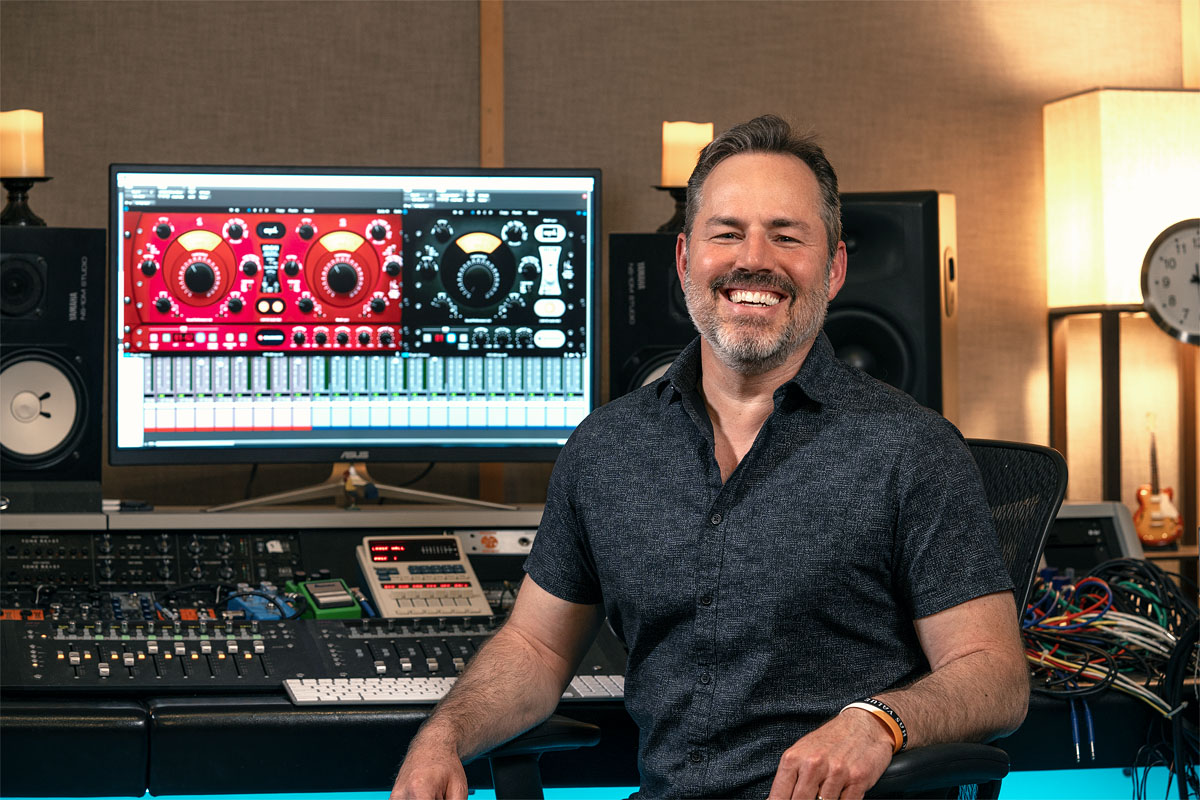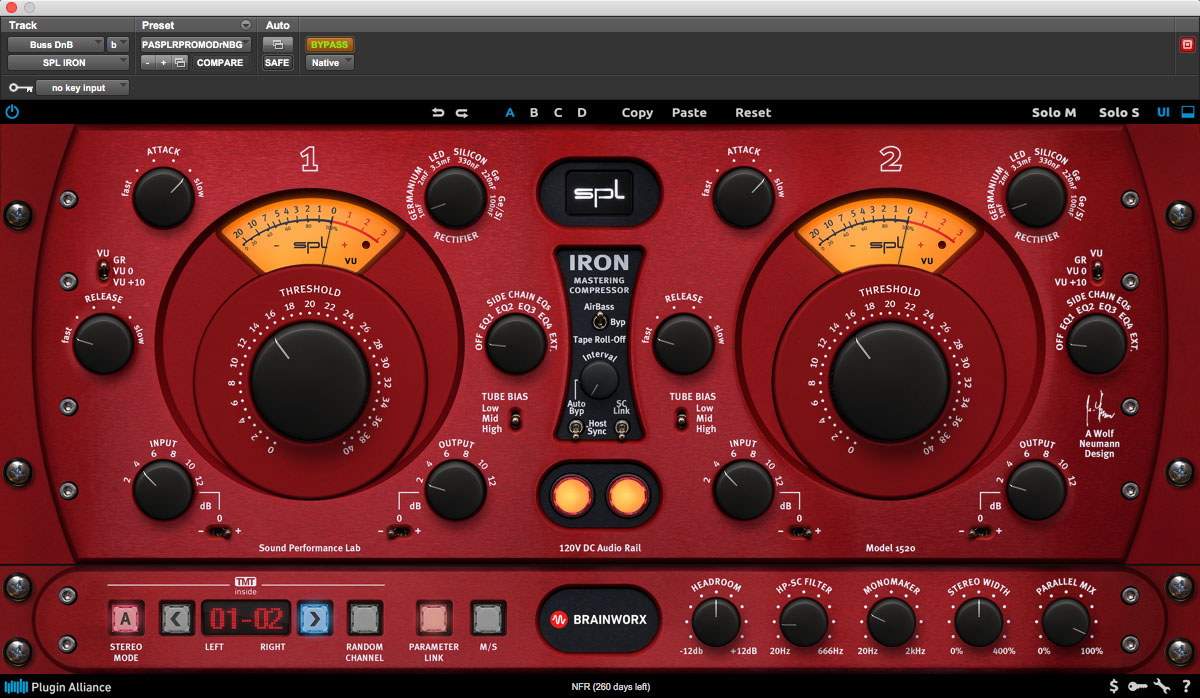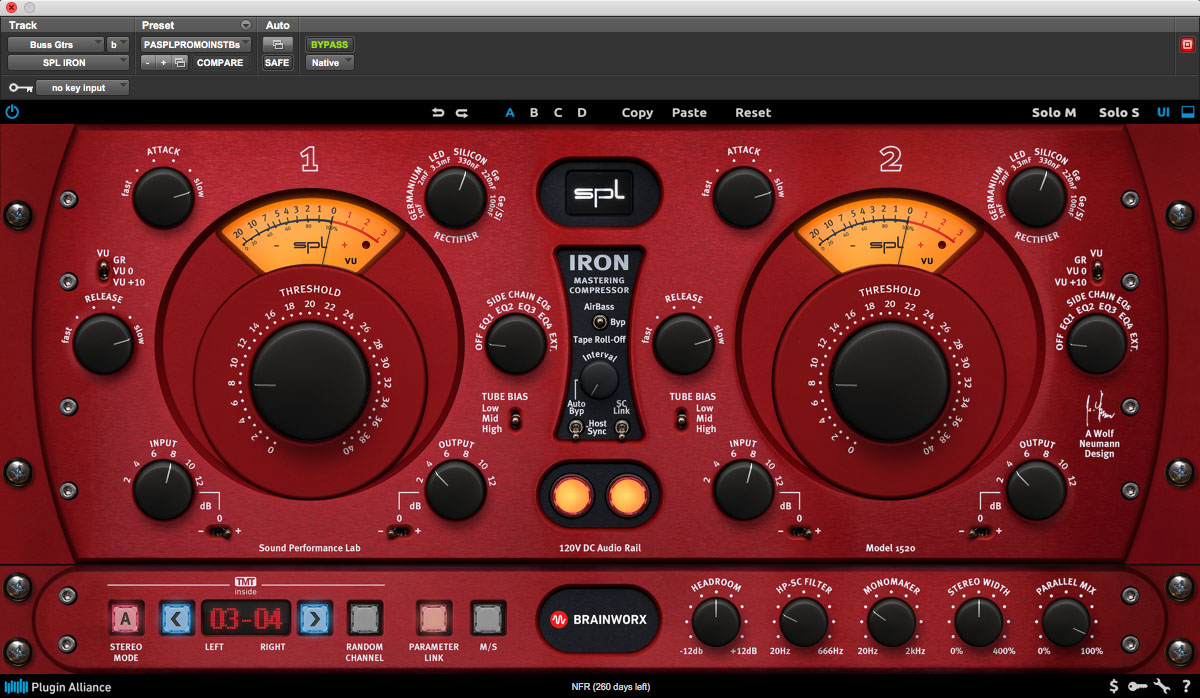Tips & tricks and NEW presets for download!
Nashville based producer/mixer/recording engineer Joe Carrell has accomplished a lot in his 20+ year career. 8 Grammy-nominated albums mixed and/or recorded, Dove award-winning songs and albums, 25 charting number ones mixed and many others recorded, Billboard top tens in multiple categories, and more.
Let’s see and hear about his experiences with SPL IRON.

Written by Joe Carrell
We audio types love our compressors. VCA, FET, and optical are words we know well and use within our work every day. But let’s talk a few minutes about the “original” form of audio compression, valve-based variable-mu.
Though originally designed for the broadcast market, many pieces from that era found their way into recording studios. Names like Altec, EMI, Gates, RCA, and Fairchild have all earned their stripes on many of our all-time favorite albums.
But what makes variable-mu designs different from the more common VCA or FET circuits, and why should we use them in our mixes? While some compressors of other types have had tubes within the audio path, variable-mu design is the only form of compression that actually uses tubes to achieve gain reduction. This separates them from their counterparts in multiple ways. The most important of those differences for us mixing engineers is, of course, the sound.
Variable-mu circuits are much heralded for their harmonically rich tone, smoothness, warmth, and ability to “glue” tracks together.
However, they also developed a reputation as a “one or two trick pony” as they were considered slow and often had only fixed or very limited options for attack and release times. Even the famed Fairchild had only two attack time options limiting its ultimate usefulness on many sources.
Wouldnʼt it be great if we could get that type of super sweet tone and smooth compression with a more modern and versatile feature set? I have great news...we can.

Enter the mighty SPL IRON mastering compressor. (This is where the crowd goes wild) IRON is an absolutely unique beast of an audio tool. While it may be inspired by the classic radio era circuits, this is an entirely new concept capable of being quick and clean, ultra-smooth and vibey, and anywhere between. The limited features of vintage models are a distant memory with a massive number of user-adjustable settings to dial in exactly what we need for modern productions.
Before we get into audio examples and presets let me quickly give you just a few of the advancements and features that get me pumped about this compressor:
- 6 different selectable attack and release settings across 6 different rectifiers equal an impressive 216 different combinations.
- 3 user-selectable tube bias settings to alter the intensity of compression.
- 2 different tube types running in parallel to give us a uniquely smooth and musical compression.
Yes, thereʼs plenty more, but thatʼs enough to prove my point that IRON is what itʼs predecessors likely wanted to be when they grew up.
The song I have chosen for these examples is a recent modern pop mix. My mixing style is a multi-buss method typically using three or four subgroups. In each group example the stereo buss eq and compression are disabled so youʼre hearing no further enhancement.
Drum and Bass Group Master
The drums and bass needed to really drive this song. I achieved a fantastic result with IRON by using the germanium one rectifier I have an attack time of 30ms and a release of 150ms. This allowed the transient information to pop through briefly before IRON clamped down. You will hear how the kick and snare foundation become more “in your face” and the entire group becomes more exciting. I was achieving between 1-2dB gain reduction.

I also chose to engage the AirBass option that added a very hi-fi high frequency and low-frequency boost. On more vibey material, I have chosen the “tape roll-off” to smooth the high-frequency content very effectively as well.
Lastly, I drove a few dB extra input into the compressor for thickness of tone.
Guitar and Key Group Master
Again driving the input into IRON for transformer saturation, I was able to improve the overall tone of the group and achieve more excitement while still reigning in the dynamics slightly. Using the silicon rectifier, I had an attack time of 12ms and a release time of 300ms. I was achieving 2.5dB of gain reduction during the guitar solo section. Only 1-2dB elsewhere throughout the song.

While these settings worked great for this punchy up-tempo song, I have included an additional preset with a 900ms release time that may work better for you on mixes that require something with a slower smoother release.
Vocal Group Master
As with the other groups, my vocal group compression is very often as much about the tone and the “gluing” together of the multiple tracks that make up the group as it is about the dynamic control itself. Sometimes the dynamic control is actually secondary. However, on my vocal group buss, I do often use a little more compression than on the other groups.

In this example, you will hear 2-3.5dB of gain reduction. Using the LED rectifier I have an attack time of 3 ms and a release of 2.5 seconds. Using quick and punchy compressors like the Purple MC77 on individual tracks to achieve the energy and aggression I wanted, the slower release of IRON across the vocals ties the group together as one and smoothes it out just enough.
One of the amazing things to me about this type of circuit, and especially IRON, is the ability to reduce dynamic range while at the same time making a track or group of tracks feel that they are even more alive.
Some people prefer a vocal group compressor to be very fast-acting and shave off any peaks. For those of you that prefer that approach, but would still like tonal benefits of passing through a high-end circuit like IRON I have included a second vocal group preset labeled “fast”. This preset has a lightning-fast 0.5ms attack and 300ms release.
Stereo Master
In this audio example, IRON engages after four bars. You will immediately notice the difference in the impact and density of the mix. Also, the lead vocal is now sitting nicely in the track and seems to ”belong”. This is achieved using the setting I typically would for a song like this on a VCA buss compressor like the Townhouse or the Shadow Hills Mastering Compressor. Using the germanium one rectifier, I get an attack time of 30ms and a quick release of 100ms. This keeps things lively and punchy.

You will also notice I switched to a low Tube Bias to decrease the density of the compression. While not necessarily the same thing as “ratio” on other types of compressors, itʼs helpful to understand that the intensity/depth of your compression will rise as you switch to a higher tube bias.
Lastly, using the stereo width control, I added a bit of enhancement to the stereo field.
Also, I have included a second stereo master preset labeled “fast” that has a quicker attack time of 10ms for those that want a little more transient control.
All of the examples so far have been without the stereo buss eq I was actually mixing through at the time. Using the AMEK EQ 200 letʼs put a little of the polish back in to emulate what I was hearing at the time. You will notice the top end open up and everything seems a little more defined and crisp.
Although the name Mastering compressor implies stereo buss usage, donʼt hesitate to use IRON on numerous mono or stereo tracks throughout you mixes.
Itʼs amazing on drums, bass, vocals, piano, acoustic guitars, etc. When compressing sources like these, be sure to remember and experiment with the 3 options for Tube Bias.
In closing, donʼt let the great depth of options that IRON has intimidate you. With just a short time of studying itʼs controls, you can be as proficient as you are on other compressors and still enjoy the tone and smoothness of this great tool. A great help to me was keeping a copy of the various rectifier response times handy in my documents folder. I also had a copy printed out on a rack nearby while learning the software. IRON is worth a little extra effort.
Also, take a moment to note how the input and output controls are in fixed 2dB steps with the option to either boost or cut. This will be very important in achieving the desired input “drive” and final output volume. You may often find yourself using the input in + (boost) mode driving level into the circuit. For output, you may often switch between + for pure makeup gain during heavier compression and - (trim) to compensate for the increased volume of when you are driving the input.
I hope this helps some of you that have yet to experiment with IRON understand its uniqueness and get up to speed quickly. For my friends that already own IRON, maybe you can fall in love with it all over again. Happy mixing friends!
A Word About The Presets: The included presets have been calibrated to read 1dB of compression at -18dBFS in your DAW. Simply adjust the threshold to achieve more or less compression. Then adjust the output section to achieve the desired final output volume.
Download Joe Carrels presets for your DAW here:
Credits: “Smile” - Caleb Lovely
For more on Joe Carrell: